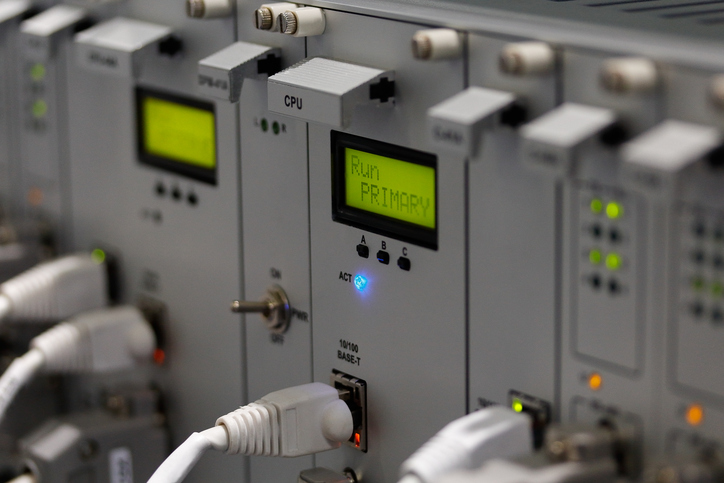A programmable logic controller is a digital computer used for automation of typically industrial electromechanical processes. Invented in the late 1960’s, programmable controllers were primarily used in machinery on factory floors but they are used in many machines needed across a variety of industries.

PLCs are designed for multiple arrangements of digital and analog inputs and outputs. They need to be able to stand the rigors of factory floors and their temperature ranges, electrical noise, vibrations and impacts. A PLC can run an automatic machine year after year with little ‘assistance’ from humans.
PLCs are an example of a "hard" real-time system where output results are produced in response to input conditions within a limited time. The PLC programs are a set of instructions to turn on and off outputs based on input conditions and the internal program.
PLCs have continued to evolve over the years and become more intelligent. PLCs have been used in electrical communications such as computer networks. There are now many proprietary networks including well-known Supervisory Control and Data Acquisition (SCADA) which is used at Western Controls.
Impact of PLCs Introduction
The evolution of PLCs has had a massive impact on the manufacturing world. The high-speed thinking meant humans are no longer needed in millions of processes throughout the world. Many would lament the loss of jobs but PLCs have probably also saved many lives.
Factory floors with heavy equipment were dangerous places to work where lives and limbs were lost on a regular basis. PLCs have made the process much safer and removed most people from the line. Different jobs were created as PLCs required electricians and PLC programmers.
Electricians maintained the systems that were now being powered by PLCs so a control language was needed that they could understand which led to the introduction of ‘ladder logic.’
What Did We Do Before PLCs?
In the case of a factory floor, a human was needed to manually control equipment. An operator was used to press a button to move a conveyor belt then another button to perform an action before pressing the conveyor belt button again. The automation process meant few humans were needed to complete a process.
PLC programming evolved from these “manual” systems. The limited “smarts” used in the electrical wiring to safeguard the machine were further developed. The contact relays for ‘normally open’ and ‘normally closed’ activated the electrical circuit.
Soon computer processors became available along with sensor devices like infrared proximity and level sensors. The manual processes that involved a human could now be replaced with computer automation called PLCs.
Western Controls provides PLC and SCADA programming services with a dedicated PLC / SCADA Systems Engineer in-house. If you company requires programming or advice to create the right processing system call us on (08) 6254 4000.